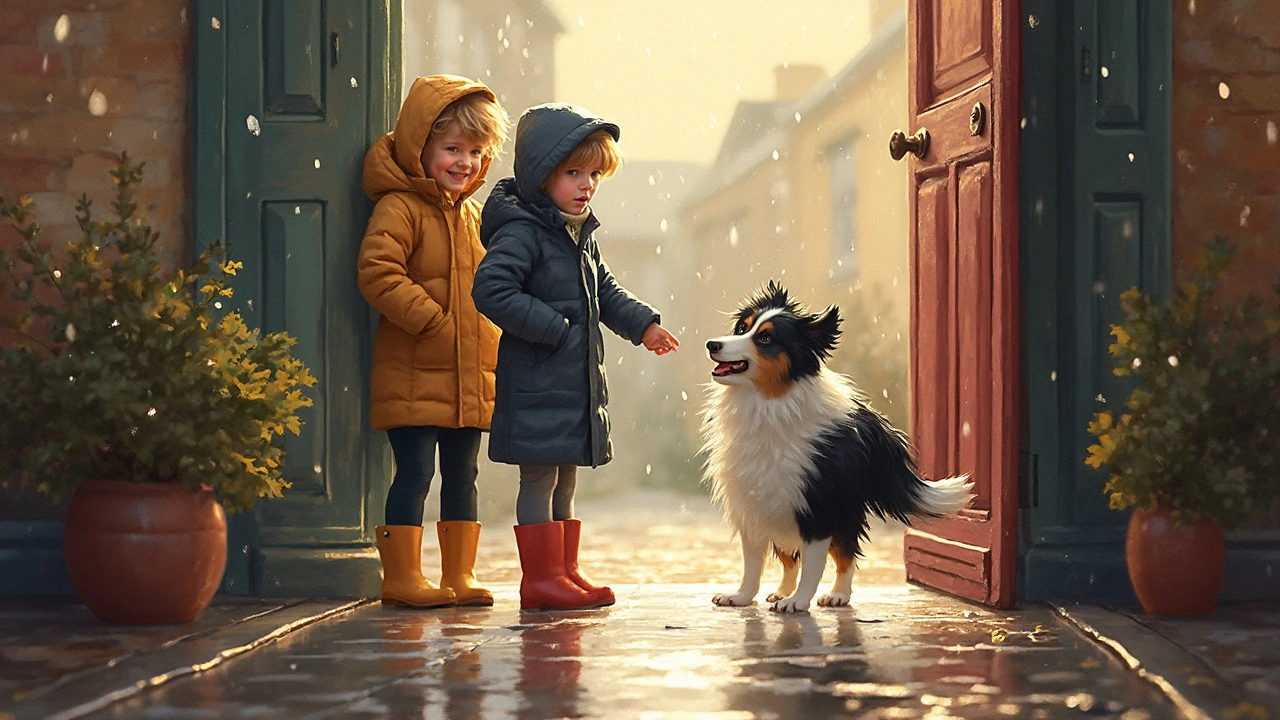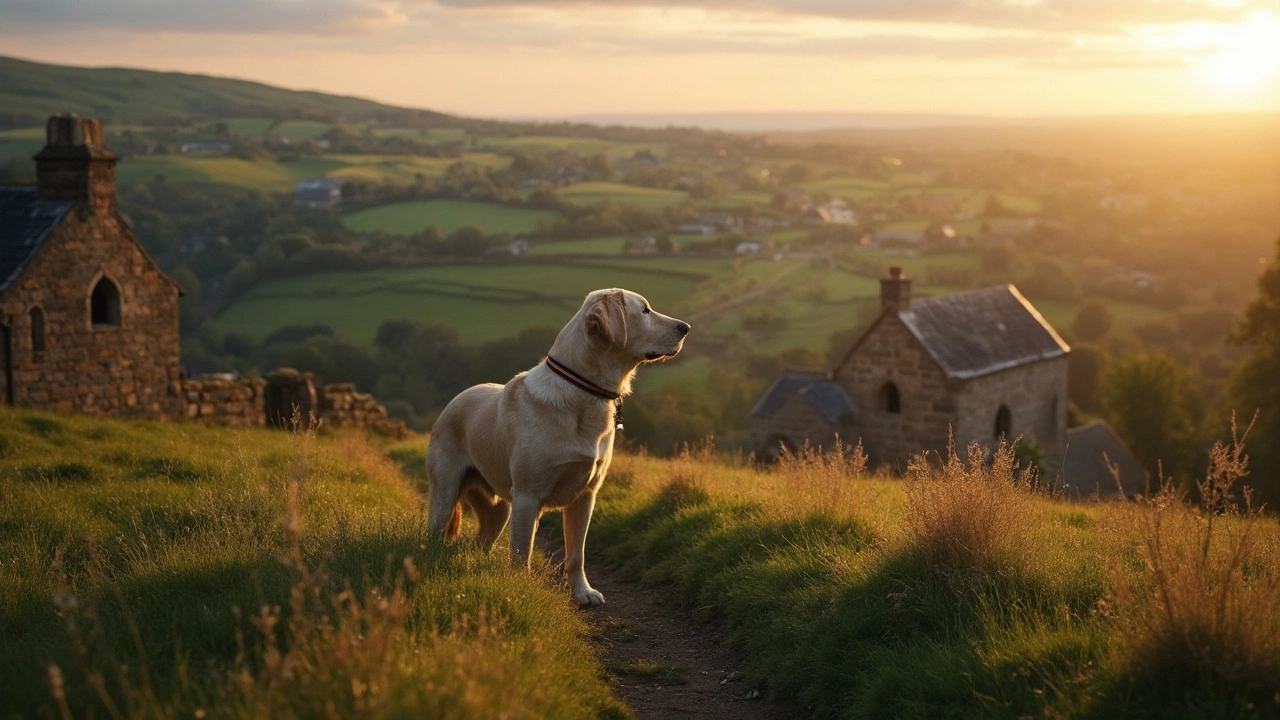Imagine walking through the Waitākere Ranges, getting lost, and relying on your dog to sniff their way to you miles away. It sounds almost too amazing, doesn’t it? The bond between humans and dogs isn’t just about fetch and cuddles; it’s also about chemistry—the smelly kind, to be exact. Can your dog really pick up your unique scent from a staggering 11 miles out? Let’s get into what science actually says and why your dog’s nose is so much more powerful than you think.
Inside the Extraordinary Canine Nose
Dogs don’t just beat us at the sniffing game—they completely outclass us. You might already know that dog noses are “better” than ours, but here’s how much better: a dog’s nose has up to 300 million scent receptors, compared to our measly 5 million. That’s like comparing a toddler’s toy drum to a full-blown rock concert sound system. Not only that, the area of a dog’s brain devoted to analyzing smells is about 40 times bigger, proportionally, than ours. No wonder your pup can sniff out a single crumb or detect a bag of treats in your backpack from across the room!
But how exactly does this superfine sense work? Dogs can basically “see” the world in smells, layering scents and separating them like a human separates colors. They have an extra organ called the vomeronasal organ, or Jacobson’s organ, which gives them the ability to sniff out pheromones and other chemical cues we can’t even imagine. That’s why a dog at the beach can ignore the stench of dead seaweed and still hone in on your flip-flop hidden under a pile of towels. Their noses are humid, too, which helps molecules stick, and they wiggle their nostrils independently for max accuracy. Smelling is literally how they make sense of the world around them.
Fact or Fiction: Dogs Smelling Owners from 11 Miles Away
Here’s what you really want to know: Can a dog actually pick up the scent of their owner from 11 miles away? This claim has floated around the internet and even makes for heartwarming stories in the news, like when a lost Labrador trekked across the countryside to get back to its human. But the honest answer isn’t a clear yes or no. Reality is beautiful, but it’s also messy. Most scientific research, including work by canine scents expert Dr. Alexandra Horowitz at Barnard College, shows that a dog’s sense of smell depends on a bunch of things: wind, weather, terrain, and just how “scentable” the target is. Under perfect conditions—cool weather, moist air, and no smelly distractions—dogs have been documented to follow scent trails for several miles. Bloodhounds are legendary: There are accounts of them tracking scents for over 12 miles and up to 300 hours old. That said, there’s no controlled evidence proving most dogs can reliably detect a person’s scent from exactly 11 miles away. It’s rare, but not impossible. The breed matters a lot, and so do outdoor conditions. In one high-profile search, a German Shepherd led searchers to a missing woman 10 miles from her last point—so the myth isn’t wild fantasy, but it’s not something every house pet will pull off on a rainy Tuesday.
Just for reference, the average city dog, surrounded by hundreds of daily smells from cars, people, and food, won’t have the same luck as a trained tracker dog working in cool, open bushland.
“A dog can pick up a single molecule in a sea of scents, but whether they can follow that to its source depends on everything from humidity to distractions,” notes Dr. Horowitz.That’s why police dogs sometimes lose a scent trail after just a few blocks, while in other cases, rescue dogs have located missing hikers miles from where they started.
Here’s a real-world comparison:
| Dog Breed | Known Scent Tracking Range | Success Depends On |
|---|---|---|
| Bloodhound | Up to 13 miles | Training, conditions, scent age |
| German Shepherd | 10 miles (documented search) | Handler skill, weather, terrain |
| Beagle | Smaller ranges (few miles) | Breed instinct, distractions |
| Family Mutt | Varies | Fitness, environment, motivation |

What Makes Your Dog Recognize YOUR Scent?
Your dog really does love how you smell. Not in a cologne-advert-worthy kind of way, but because you’re like home to them. Every person gives off a unique combination of skin oils, sweat, bacteria, and what they eat. Dogs are crazy at picking up this signature scent—even when you can’t smell yourself after a workout, they absolutely can. Ever had your dog lick your pillow or snuggle your unwashed hoodie? That’s because even the faintest trace of you is a comfort zone.
In one clever experiment by Dr. Gregory Berns, dogs were put in an MRI scanner (for real), and given whiffs of different people's odors. When these pups detected their owner’s scent—even without seeing them—their brain’s reward centers went wild. Your smell triggers their happy memories. Want some quick proof? Hide a sock and call your dog; watch how quickly they find it compared to someone else’s. Their noses basically have facial recognition in smell-form, tuned perfectly to your unique chemical “profile.”
It’s not just about the “strongness” of the scent—familiarity plays a huge role. That’s why dogs can pick out their owner’s smell from a group of strangers, or recognize a former owner after years apart. One famous case involved a dog in Japan, named Hachikō, who greeted his departed owner at the train station for years—the power of memory paired with the nose caused this unwavering loyalty.
And if you’re thinking, “What if I use a different shampoo or eat a garlic-heavy meal?”—don’t worry. Shifting surface smells don’t erase your base odor. Dogs pick up on the chemical signatures beneath perfumes and body sprays, which is why they’re better than any biometric scanner on the market.
Real Stories and Weird Science
The dog world is full of stories that sound like miracles, but often, there's a bit of science behind the magic. Remember the tale of the border collie in Texas who found her family after being lost for over a week? She navigated more than 10 miles of wild territory, dodging highways and predators, apparently following a faint scent trail across parks and fence-lines. Or take the classic tale of Bobby the Wonder Dog, who traveled over 2,000 miles across the US to reunite with his family in the 1920s. These stories fill up pet lover blogs, but what really explains them? It's likely a mix of navigation, occasional human guidance, and a dog’s super sniffer. Even so, science backs them up: a study from Auburn University showed that trained dogs frequently follow human scent trails for more than 5 miles, even when the trails are several days old. Search-and-rescue organizations in New Zealand often talk about “miracle” finds, where well-trained tracking dogs have located missing hikers hours after rain wiped away physical tracks—sniffing out microscopic skin particles shed with every step.
It isn't all glamorous, though. Sometimes, dogs can get distracted or lose the trail entirely if a competing odor (like a barbecue or another dog in heat) interrupts. Plus, things like heavy rainfall, strong wind shifts, and dry air can limit how far they can pick up on a trail, which is why not every missing dog finds their way home. But when it works? It looks like magic—even though it’s really the product of evolution and some trusty scent molecule physics.
If you want to see your own dog’s sniffing prowess in action, play "hide and treat" at home. Hide your favorite snack around the house (try peanut butter on cotton wool), and watch how they zig-zag, sniff, double-back, and lock on. Imagine that, multiplied by several miles, with your scent as the holy grail—it’s a search mission only dogs can handle.

How You Can Tap into Your Dog’s Scent Abilities
Even if you’re not a search-and-rescue ranger or a professional dog trainer, you can put your dog’s nose to good use. First off, never underestimate the power of games. Scent work—sometimes called “nosework”—is a fun way to tap into this primal skill. Start simple: cut up some hot dog slices or cheese, hide them around your house, and let your dog find them. You’ll see how quickly their brain clicks into focus-mode. Feeling ambitious? Get a set of scent work containers (you can just use old lunch boxes) and start giving names to different scents: vanilla, cinnamon, clove. Let them learn and see how fast they pick up new ones.
For those who enjoy the outdoors, teach your dog to find items by scent on walks. Drop a glove on the path, walk away, and then cue your dog to locate it. Always reward heavily—confidence is everything for a happy sniffer. Want to step it up? Look for organized scentwork or tracking classes near you in Auckland or wherever you call home. It’s a great way to bond, and you might just have a natural bloodhound on your hands without even realizing it.
- Use old t-shirts or socks in scent games – your personal smell will train their focus.
- Keep scent games positive—lots of treats, snuggles, and encouragement.
- If your dog ever gets loose, leave an item of your clothing at the last known spot. Sometimes, dogs circle back to their human’s scent base.
- Don’t stress over “masking” your smell with sprays. Your dog can (and will) always find the real you.
- Remember, older dogs with health issues may lose some sniffing power, but most keep this ability well into old age.
On the tech side, scent training is actually helping in more than just lost dog cases. Dogs are being taught to detect everything from low blood sugar to certain cancers—all because their noses work like a high-precision chemical scanner. If you ever wondered why airports have beagles patrolling luggage lines, now you know!
